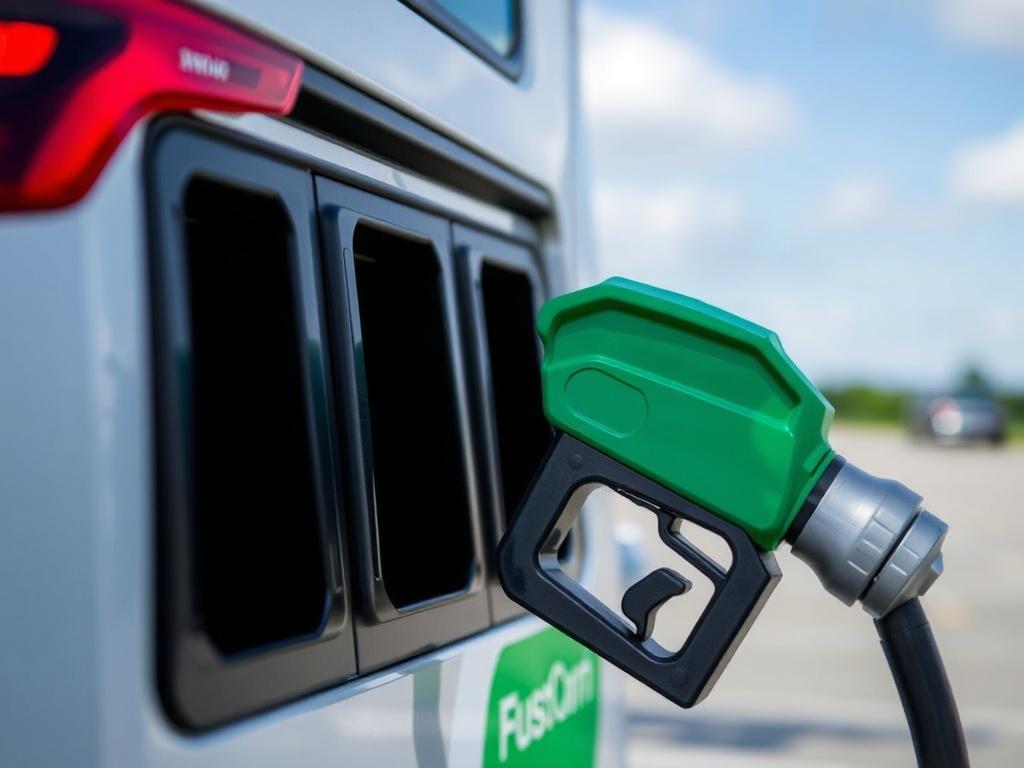- What Are Synthetic Fuels?
- How Are Synthetic Fuels Produced?
- Understanding Carbon Neutrality in Synthetic Fuels
- The Carbon Cycle of Synthetic Fuels
- Benefits of Synthetic Fuels
- Potential Applications of Synthetic Fuels
- Challenges and Criticisms of Synthetic Fuels
- Current Developments and Future Outlook
- Synthetic Fuel vs. Electric Mobility: Complement or Competitor?
- Summary of Key Points
- Conclusion
In the quest to find cleaner and more sustainable energy sources, synthetic fuels have emerged as a promising alternative to traditional gasoline. With climate change concerns intensifying globally, synthetic fuels offer a potential pathway to reduce carbon emissions while maintaining the convenience and energy density that liquid fuels provide. But what exactly are synthetic fuels, and can they truly be considered carbon-neutral gasoline? This article will explore this fascinating topic in depth, explaining what synthetic fuels are, how they are produced, their benefits and challenges, and their potential role in our energy future.
What Are Synthetic Fuels?
Synthetic fuels, often called synfuels, are liquid or gaseous fuels produced from sources other than crude oil. Unlike conventional gasoline or diesel—which are extracted and refined from petroleum—synthetic fuels can be made from a variety of feedstocks, including coal, natural gas, biomass, or even carbon dioxide captured from the atmosphere. One of the key appeals of synthetic fuels is their ability to mimic the chemical properties and energy content of traditional fuels, making them usable with existing engines and infrastructure.
The term “synthetic gasoline” generally refers to liquid fuels designed to replace or supplement conventional gasoline, but made through synthetic processes. These processes often involve converting carbon-rich materials into hydrocarbons that match the performance and properties of gasoline. This means synthetic fuels could potentially be “drop-in” replacements, requiring minimal changes to vehicles or fueling stations.
How Are Synthetic Fuels Produced?
There are several established methods to produce synthetic fuels:
- Fischer-Tropsch Synthesis: This is one of the most well-known processes. It converts a mixture of carbon monoxide (CO) and hydrogen gas (H2), called syngas, into liquid hydrocarbons. Syngas can be derived from coal, natural gas, or biomass.
- Power-to-Liquid (PtL): This is a newer, cleaner approach where renewable electricity is used to electrolyze water, producing hydrogen, which is then combined with captured carbon dioxide to create synthetic hydrocarbons.
- Biomass-to-Liquid (BtL): Organic material such as agricultural residues or forestry waste is converted through gasification and subsequent chemical synthesis into liquid fuels.
While traditional synthetic fuels were primarily based on fossil feedstocks, recent advances focus on using sustainable inputs like atmospheric CO2 and green hydrogen. This shift is key to the carbon-neutral promise of synthetic fuels.
Understanding Carbon Neutrality in Synthetic Fuels
One of the most eye-catching claims about synthetic fuels is their potential to be carbon-neutral. But what does that exactly mean? Carbon-neutral gasoline implies that when the synthetic fuel is burned, the amount of carbon dioxide released into the atmosphere is balanced by the carbon dioxide captured or absorbed during its production. In other words, it ideally results in net-zero emissions.
Traditional gasoline fuels take carbon from underground fossil reservoirs and release it into the atmosphere, adding to the existing carbon load and accelerating climate change. Synthetic fuels, especially those produced using renewable energy and carbon capture technologies, can break this cycle by making fuels whose carbon atoms are part of a closed loop. For instance, CO2 emitted when synthetic gasoline is burned was originally captured from the air or biomass, so no new carbon is added.
However, the reality is more complicated. Achieving true carbon neutrality requires energy inputs that are themselves renewable, as well as efficient capture and conversion technologies. If synthetic fuel production relies on fossil-based electricity or inefficient processes, the carbon footprint may still be significant.
The Carbon Cycle of Synthetic Fuels
To better understand this, consider the following simplified carbon cycle for synthetic gasoline:
| Process | Carbon Input | Carbon Output | Emission Impact |
|---|---|---|---|
| Conventional Gasoline | Fossil Carbon (Underground) | CO2 to Atmosphere | Net Increase in Atmospheric CO2 |
| Synthetic Fuel from Biomass | Biogenic Carbon (Plants) | CO2 to Atmosphere | Net Zero if Biomass Grown Sustainably |
| Power-to-Liquid Synthetic Fuel | Captured CO2 from Air + Renewable Energy | CO2 to Atmosphere (Burning Fuel) | Net Zero if Renewable Inputs Used |
| Synthetic Fuel from Fossil Syngas | Fossil Carbon | CO2 to Atmosphere | High Carbon Emissions unless Carbon Sequestered |
This table highlights that synthetic fuels can vary widely in their carbon footprint depending on feedstock and production method.
Benefits of Synthetic Fuels

Synthetic fuels come with a host of potential benefits that make them attractive in today’s energy landscape. Let’s explore some of their main advantages:
- Compatibility with Existing Infrastructure: Unlike electric vehicles that need new charging networks, synthetic gasoline can be used in current cars, trucks, and airplanes without modifications. This makes adoption easier and faster.
- Energy Density: Synthetic fuels retain the high energy content of petroleum products, which is critical for heavy-duty transport, aviation, and shipping where batteries currently fall short.
- Grid Balancing: Power-to-liquid synthetic fuels can act as a form of energy storage. Renewable electricity can be converted into liquid fuels during periods of excess supply, stabilizing the grid.
- Reduced Carbon Emissions: When produced with green hydrogen and captured CO2, synthetic fuels can significantly lower lifecycle greenhouse gas emissions compared to fossil fuels.
- Diversifying Energy Sources: Synthetic fuels reduce dependence on crude oil and improve energy security by enabling local or distributed fuel production.
Potential Applications of Synthetic Fuels
Synthetic fuels have broad applications across different modes of transport and industry:
| Sector | Role of Synthetic Fuels | Benefits |
|---|---|---|
| Automobiles | Drop-in gasoline replacement | Immediate carbon footprint reduction; no engine changes needed |
| Aviation | Jet fuel alternative | Lower emissions in aviation; no weight penalty |
| Shipping | Marine diesel replacement | Improved emissions; aligns with IMO climate goals |
| Industrial Processes | Feedstock and process energy | Reduces fossil fuel dependency in chemical manufacturing |
Challenges and Criticisms of Synthetic Fuels
Despite their promise, synthetic fuels face several significant challenges before they can become mainstream solutions:
- High Production Costs: Today, synthetic fuel production is much more expensive than extracting conventional gasoline, mainly due to complex chemical processes and expensive energy inputs.
- Energy Intensity: Creating synthetic gasoline requires a substantial amount of energy, often from electricity. If this energy isn’t renewable, it can increase overall carbon emissions.
- Limited Renewable Energy Availability: Scaling up synthetic fuels depends on abundant, inexpensive renewable electricity, which remains a bottleneck in many regions.
- Competition with Direct Electrification: For passenger vehicles, electric vehicles (EVs) are becoming cheaper, more efficient, and more widespread, potentially limiting the need for synthetic gasoline in this sector.
- Environmental Concerns: Feedstock sourcing like biomass must be carefully managed to avoid deforestation, biodiversity loss, or negative land use impacts.
Addressing these hurdles will require technological innovation, policy support, and coordinated investment in renewable energy infrastructure.
Current Developments and Future Outlook
Many governments, companies, and research institutions are actively exploring synthetic fuels as part of their climate strategies. Pilot projects using power-to-liquid synthetic gasoline powered by wind and solar energy are underway in Europe, the United States, and Asia. These projects aim to demonstrate the feasibility, optimize production processes, and drive down costs.
Public policies are also adapting. Carbon pricing, renewable fuel standards, and emissions regulations can incentivize synthetic fuel production, while investments in green hydrogen and carbon capture will indirectly support synthetic gasoline development.
Research is focused on improving catalysts, reducing energy consumption of synthesis processes, and sourcing feedstocks sustainably. Hybrid approaches, where synthetic fuels are combined with biofuels or used in conjunction with electric vehicles in a diversified energy mix, are gaining attention.
Synthetic Fuel vs. Electric Mobility: Complement or Competitor?
As electric vehicles rapidly gain market share, there is often debate on whether synthetic fuels remain relevant. The answer lies in complementarity. Electric vehicles are excellent for short to medium distances and urban environments. However, for aviation, freight transport, and legacy vehicles, synthetic fuels may be indispensable for many years to come. They provide a practical means to decarbonize sectors where battery technology faces fundamental limitations.
- Electric Vehicles (EVs): Most promising for urban cars and light-duty transport.
- Synthetic Fuels: Better suited for aviation, shipping, heavy-duty trucks, and existing fleets.
In short, synthetic fuels can be an important piece of a multifaceted, carbon-neutral energy puzzle.
Summary of Key Points
| Aspect | Details |
|---|---|
| Definition | Liquid or gaseous fuels created synthetically from various feedstocks, not crude oil |
| Carbon Neutrality | Possible when using renewable energy and captured CO2, but depends on production pathways |
| Production Methods | Fischer-Tropsch synthesis, power-to-liquid, biomass-to-liquid |
| Advantages | Compatible with existing vehicles, high energy density, potential to reduce emissions |
| Challenges | High costs, energy intensity, need for clean electricity, scale-up hurdles |
| Main Uses | Automobiles, aviation, shipping, industrial feedstocks |
Conclusion
Synthetic fuels hold remarkable promise as a form of carbon-neutral gasoline, offering a bridge between our current fossil fuel-based world and a more sustainable energy future. They uniquely combine the benefits of liquid fuels — energy density, ease of storage, and compatibility — with the potential to be produced from renewable energy and captured carbon, minimizing their greenhouse gas impact. While challenges such as cost, energy input requirements, and scale remain significant, ongoing research and policy support are helping to close these gaps. As part of a diverse energy portfolio, synthetic fuels can complement electric vehicles by decarbonizing sectors that require liquid fuels, like aviation and heavy transport. Ultimately, synthetic gasoline could play a vital role in achieving climate goals, reducing oil dependency, and powering a cleaner tomorrow.
Как вам статья?







